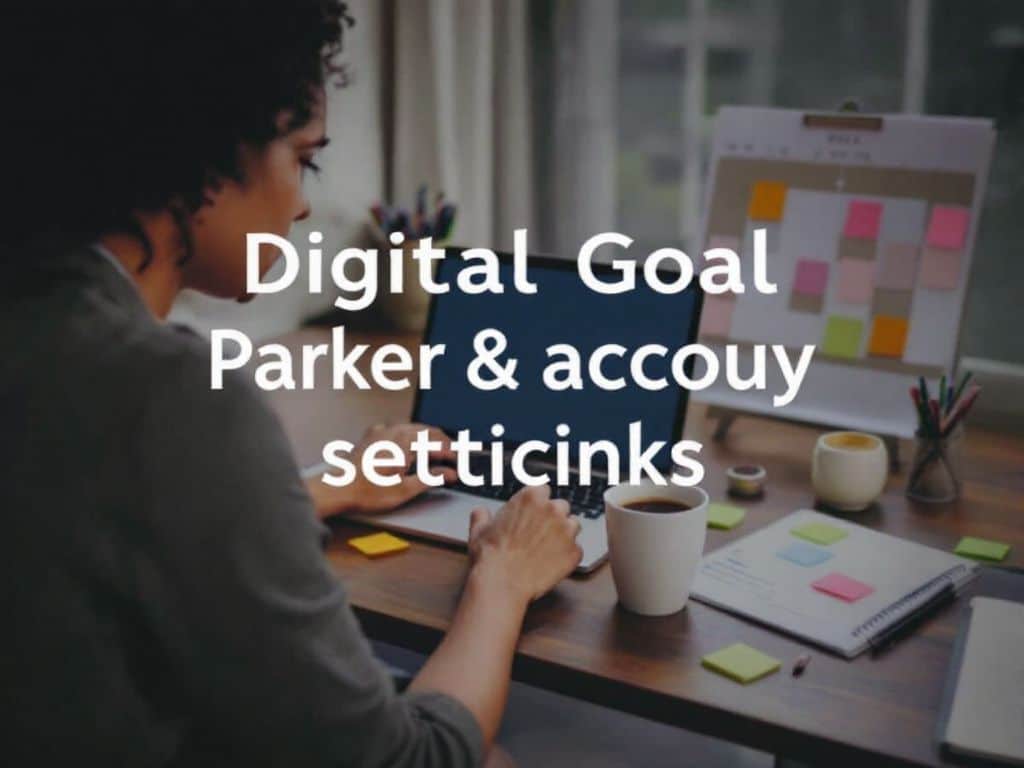Ever felt like your plans keep slipping through the cracks, especially when it comes to virtual planning? You’re not alone. Many people struggle to keep track of their goals in today’s digital world. When everything is just a click away, distraction is the name of the game. But here’s the good news—you can regain control with a bit of digital goal setting. Let’s dive right into how you can transform your approach to planning.
Why Virtual Planning Feels Overwhelming
Consider this: you’re at your desk, a cup of coffee within reach, ready to conquer the day. You open your laptop to tackle your tasks and—bam!—emails, notifications, and chat messages start pinging you in every direction. As much as digital tools are a blessing, they can be a bit of a curse if not managed well.
We often jump from one tool to another, hoping for a magical solution without realizing that the magic starts from within — our ability to pave a well-thought-out path towards achieving our goals. It’s easy to lose focus with digital avalanche, so let’s flip the script.
Getting Your Planning Ready
Alright, let’s talk basics. Being planning ready is about aligning your tools and methods with your personal style. Believe me, it makes all the difference. You probably don’t need every app or tool out there—just the right ones. Let’s break it down:
**Step 1: Identify Your Goal Categories**
Grab a piece of paper or open a note-taking app. Start by jotting down the areas in your life where you want to set goals. You might have:
- Personal Development
- Career Advancement
- Relationships
- Health and Fitness
- 5. Financial Stability
- 6. Hobbies and Recreational
Organize these into broad categories. It’ll give you a clear bird’s-eye view of your priorities and gaps.

**Step 2: Choosing Your Digital Tools**
Once you’ve got your categories, it’s time to pick your digital partners-in-crime. You don’t need an army, just a few trusty soldiers.
- Try apps like Trello or Asana for structuring projects. These platforms are great for setting up organized workflows and can work splendidly for both personal and professional life stress-busting.
- Looking for motivation and visualization tools? Evernote or Notion are fantastic for crafting detailed goal structures.
- For accountability and reminders, think **Google Calendar or any reminder plugin you can quickly check from your phone.
Now, how do you slot your goals into these tools effortlessly? Let’s move onto that.
Crafting SMART Goals in the Digital Age
You may have heard of SMART goals before. They’re specific, measurable, achievable, relevant, and time-bound aims. These aren’t just buzzwords—they’re the scaffold for building a robust goal strategy.
- Specific: Drill down to the nitty-gritty. Instead of “Get fit,” try “Exercise 30 minutes, three times a week.”
- Measurable: Add numbers. They’re more motivating than you might think. Track your progress.
- Achievable: Challenge yourself, but don’t set yourself up for failure.
- Relevant: Tailor and adjust your goals around your larger life plans.
- Time-Bound: Assign deadlines. They’re key to avoiding the ‘I’ll get to it someday’ trap.
With these in mind, grab your chosen digital tool and get these pieces set up. The digital sphere gives you flexibility unmatched by paper. You can rearrange, edit, and delete without starting from scratch.
Managing Distractions in a Digital Landscape
One minute you’re focused, and the next thing you know, you’re six videos into a YouTube autoplay spiral. Trust me, I’ve been there! But combating this distraction is possible.
**Technique 1: Use the Right Add-ons**

Extensions like **StayFocusd** limit time on distracting sites. Consider blockers for app notification on your devices when you set focus time.
**Technique 2: Pomodoro Technique**
It’s simple: work on a task for 25 minutes, then take a 5-minute break. Not only does this keep burnout at bay, but it shoves distractions into tiny spaces, rather than letting them roam free.
**Technique 3: Measuring Productivity**
Set aside time to review your progress each week. Use tools like **RescueTime** to get insights on where your time went and adjust.
The excitement and newness of a digital tool can wear off if you’re overwhelmed by constant notifications or diverse platforms screaming for attention. So, practice restraint and revaluate usage periodically.
Celebrating Small Wins (And Why They Matter)
Okay, this one’s fun—celebrating! Seriously, don’t underrate the power of recognizing your achievements. Crossing off tasks on apps like Microsoft To-Do sends little hits of dopamine as rewarding as they come.
- Milestone Parties: Did you complete a month-long goal? Treat yourself! Even small wins can use a bit of fanfare.
- Reflect on Journals: Write short entries about your accomplishments to solidify lifelong learning.
- Digital Badges or Visual Rewards: Use platforms that acknowledge completion with badges or visualize progress in unique ways.
These moments of joy are essential for keeping the motivation high to sprint towards the next goal.
Coordinating Virtual Collaborations

Goals aren’t always a solo journey. Often, your objectives intersect with the aspirations of others. Here’s how to weave through collaborative digital planning with finesse:
- Set Ground Rules: Early on, decide on communication methods (Slack, email) and check-in frequencies.
- Utilize Shared Boards or Drives: Centralize editable content in one spot to avoid confusion later. Use Google Drive or Dropbox. It’s a game-changer.
- Synchronize on Calendars: Integrate personal and group calendars so meetings or deadlines don’t collide with personal time.
Virtual teamwork can supercharge your goal achievement when done right—but ensure there’s clarity. Nobody wants to be caught in endless corrals over miscommunications.
Going Beyond: Setting Yourself Up for Future Success
Before we wrap up, let’s wander back to progression. The best part of Digital Goal Setting is that agility it offers. You’re not locked into a path you set months back. Reevaluate periodically (every month or quarter). Unsurprisingly, flexibility aids realistic adjustments as life throws curveballs at you.
- Learn & Adapt: Review what tools worked, which didn’t, and refine your approach.
- Routine Check-ins: Fifteen minutes every Friday to tick off tasks, fine-tune timelines, and reset intentions.
- Peer Discussions: Chat with friends or colleagues about different tool experiences.
Long-term sustainability in achieving goals comes from constant appraisal and incremental improvements.
Final Thoughts on Thriving in the Digital Age
Virtual planning might seem daunting at first glance, but it’s rooted in one principle—consistency. Use these digital frameworks to stay on track, but remember, it’s your drive and intent that will see these goals through.
Lastly, don’t stress over every misstep. Charm is in the journey and every time you refocus, you gain new insights. Commit to that process, and you’ll discover the true success of Digital Goal Setting.
Until next time, keep setting those targets and demolishing them, step by digital step.
Frequently Asked Questions
What is the most important part of event preparation?
The most important part of event preparation is determining the purpose of the event. This sets the tone for everything else, including the goals, target audience, theme, budget, and choice of venue. Without a clear purpose, an event can become unfocused and less successful[5].
What are the key elements to consider during event preparation?
Key elements include defining the type of event and its goals, deciding on the guest list and expected attendance, selecting an appropriate venue, planning the physical space and its usage, arranging for necessary services like catering and audio-video needs, and ensuring compliance with health and safety standards. Additionally, registering the event if necessary and planning for cleanup after the event are crucial steps[1][3][5].
What are the different stages involved in event preparation?
The stages of event preparation include Research, Design, Planning, Coordination, Execution, Monitoring and controlling, and Follow-up. These stages guide event planners from the initial concept to post-event analysis, ensuring a structured approach to creating successful events. Another framework includes Initiation, Planning, Execution, Monitoring and controlling, and Closure[3].
How can you ensure effective communication and coordination during event preparation?
Effective communication and coordination can be achieved by assigning roles to team members, ensuring everyone understands the event’s goals and strategies, and maintaining clear communication channels. For virtual events, assigning roles such as Co-hosts and Presenters, and using tools like presenter chat can help in continual coordination with the team. Additionally, using event management software can streamline tasks and enhance collaboration[2][3].
References










